
The Bolshoi St. Petersburg State Circus is an active circus with a museum, located in a historic luxury building on the Fontanka River embankment in the center of St. Petersburg.
The building is also known as the "Circus on Fontanka".
It was the first stone stationary circus in Russia, which is also one of the oldest circuses in the country.
Historical name: Ciniselli Circus, since it was built by order of the entrepreneur of the circus troupe Gaetano Ciniselli in 1876-1877. At that time, the circus was a unique technical structure of its kind, made on the basis of advanced engineering thought for its time.
The circus acquired its current appearance in 1959-1963, when the building was completely reconstructed.
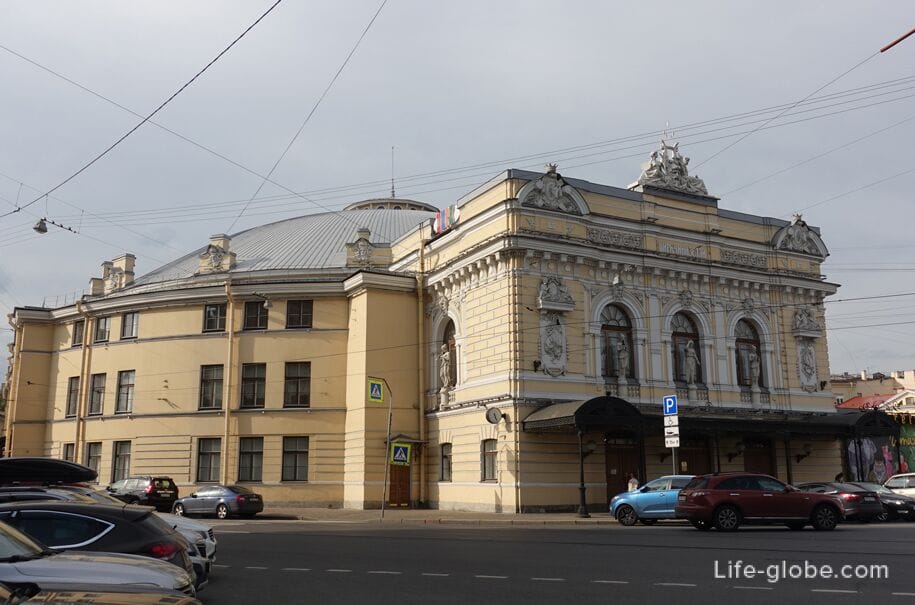
The circus building immediately catches the eye. It is made in the eclectic style, which combines Renaissance and Baroque motifs. It has a cylindrical shape, the dome of the circus is crowned with a six-meter spire.
The main entrance to the circus faces Belinsky Square, is made in the form of a risalite and stands out with a lush decorative finish. In the openings of the arched windows of the second floor there are sculptural images of the muses: Melpomene - in the center, Euterpe - in the left and right windows of the facade and Erato - in the side windows of the risalite.
A metal openwork visor is placed above the main entrance.
In the upper part of the risalit there is an inscription "Ciniselli Circus" and the dates of construction of the circus "1876" "1877".
The facade is crowned with a sculptural pediment.
In front of the entrance there is a sculpture "The Circus has arrived", installed in June 2001 and is a gift to the city from the sculptor Arsen Avetisyan.
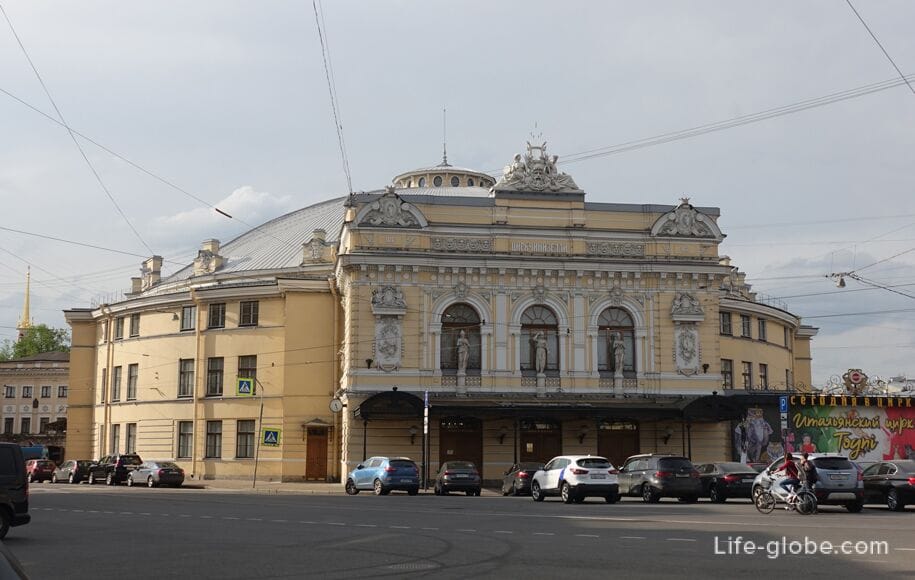
View of the circus (on the right in the photo) from the Fontanka River embankment

Now the Bolshoi Circus of St. Petersburg is active, performances are regularly held on its stage, including well-known foreign troupes visiting Russia on tour.
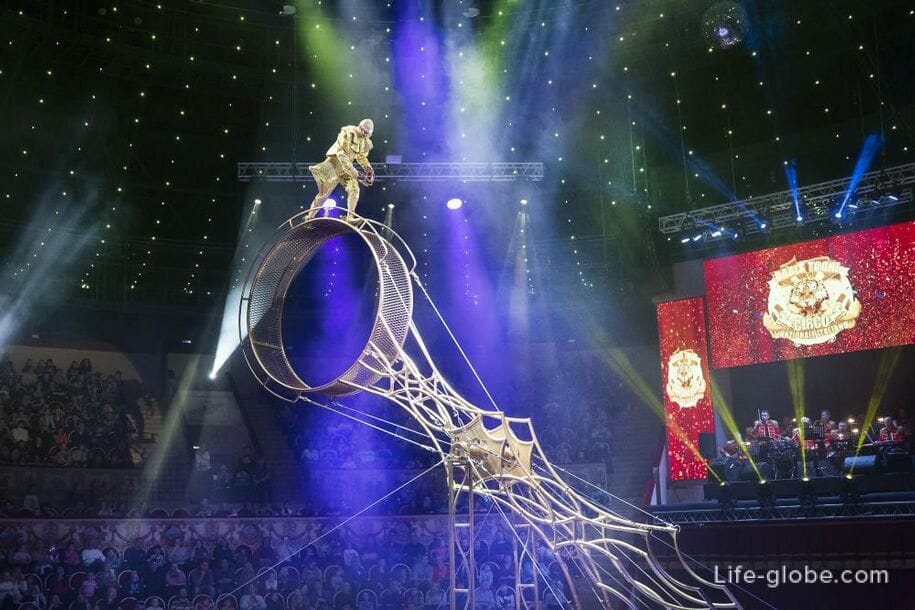

Within the walls of the circus there is a museum of Circus art, which was founded on August 8, 1928.
The museum's collection has more than 130 thousand items and consists of a library, a photo and video library, collections of paintings and graphics, decorative and applied arts, sculpture, posters, programs, costumes and props, as well as a manuscript department.
You can get acquainted with the exposition of the circus museum for free by buying a ticket to the performance.
The tour service is provided by appointment.

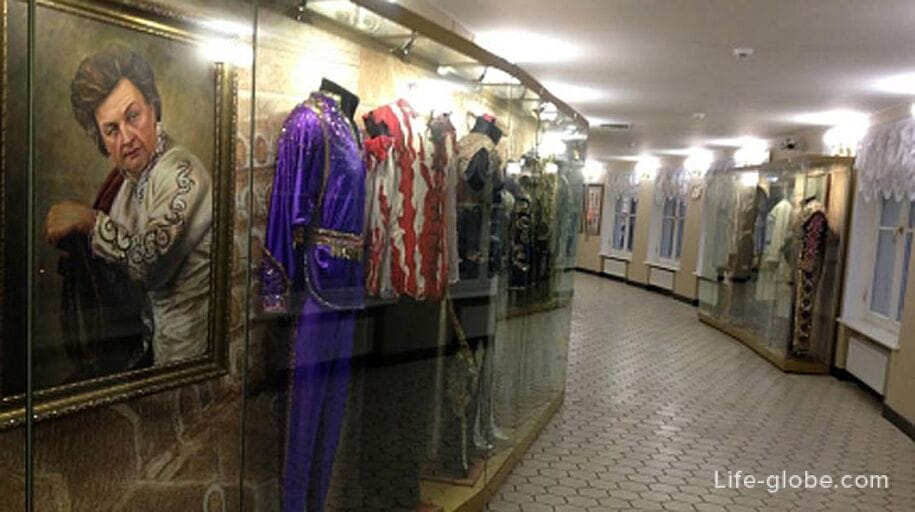
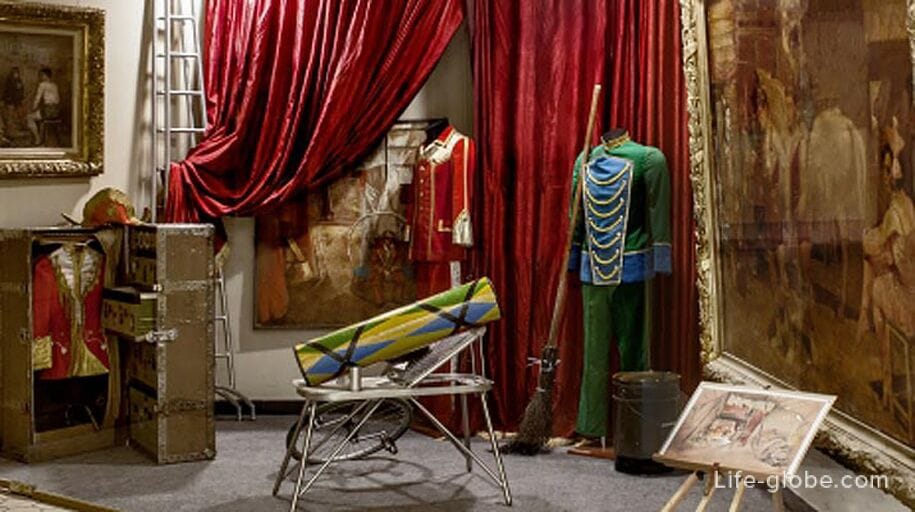
You can check the circus poster, the conditions of visiting and working of the circus museum, as well as buy a ticket for performances on the official website of the Great St. Petersburg State Circus: circus.spb.
The entrance to the circus building is possible through three doors:
- central entrance from Belinsky Square (stalls and boxes from 1 to 8 rows);
- right side entrance from the Fontanka River embankment (amphitheaters from the 9th to the 16th row);
- left side entrance from Engineering street (amphitheaters from the 9th to the 16th row).
The buffet areas are located on the 1st floor (right side) and on the 2nd floor (right and left side) of the circus building.
On the 1st floor (left side) there is a special room for storing baby strollers during the performance.
Address of the circus: Fontanka River embankment, house 3, litera A.
The coordinates of the circusare: 59°56'19.0" N 30°20'28.0" E (59.938611, 30.341111).
Nearest metro stations: "Gostiny Dvor", "Nevsky Prospekt", "Ploshchad Vosstaniya", "Mayakovskaya" and "Chernyshevskaya".
Public transport: minibuses №№ K107 and K289, stop at the corner of Engineering and Maple streets.
Car: parking in front of the circus, on Belinsky Square, is prohibited (a tow truck is working). Personal vehicles can be parked free of charge on Engineering Street, Fontanka River Embankment (odd side), or at paid parking lots on the Fontanka River embankment( even side), Belinsky and Mokhovaya streets. Attention! We recommend that you check the information before visiting.
All accommodation facilities in St. Petersburg, including in the city center and more remotely from it, can be view and book here
The history of the circus dates back to 1827, when in the Engineering Square (in front of the southern facade Mikhailovsky Castle) at the Semeonovsky Bridge (now the Belinsky Bridge) there was a Turner circus. At that time, the circus buildings were wooden and mobile.
In 1864, the Karl Ginne Circus arrived in St. Petersburg, which was located in a wooden building, which later had to be demolished due to dilapidation. In 1867, Ginne began the construction of a new wooden circus, in which his troupe performed until 1871. At the same time, Karl Ginne made attempts to lease a plot of the Engineering Square for the construction of a stone stationary circus, but the authorities refused him and in 1872 Ginne left St. Petersburg, and handed over the management of the circus to his son - in-law (his sister's husband) - Gaetano Ciniselli, who was a rider in a circus troupe.
In 1875, Cinizelli sought permission from the authorities to purchase a plot for the construction of a stone circus, and also promised to arrange a square on Mikhailovskaya Square (now Manezhnaya Square) opposite the main facade of the Manege at his own expense. This square still exists today.
The circus building was built in 1876-1877 by the architect Vasily Alexandrovich Kenel. The circus opened its doors to visitors on December 26, 1877 and became the first stone stationary circus of the Russian Empire. At that time, the circus building was striking in its grandeur and elegance, as well as in its rich interior decor. The dome of the circus at that time was solved in a new way-instead of the traditional use of columns, such a method was used, allowing to close a circular space with a diameter of 49.7 meters without a single internal support, which gave a better view of the stage.
The circus was illuminated by luxurious gas chandeliers.
There was also a stable attached to the circus, where only the privileged public had the right to look.
The structure of the auditorium was created in such a way that provided for a clear division of visitors by class: boxes and seats in the stalls were intended for the wealthy public, and cheap seats were allocated for the "people" in the 2nd tier and a terraced gallery was arranged for standing spectators. The spaces of the hall had separate entrances from the street, and inside the hall they were tightly blocked with barriers so that the spectators of the upper seats could not go down and vice versa. There were 1200 seats in the circus, and the total filling of the hall reached up to 5000 people.
There was also a royal box in the circus, which was accessed by the fifth door on the left on the facade of the risalit. The box was decorated with crimson velvet, architectural modeling, sparkling with mirrors.
Thanks to all this, the circus building quickly gained popularity and became one of the top attractions of the city.
In 1919, the history of the circus associated with the Ciniselli family stopped - the director left Russia and emigrated to Paris, and the building was placed at the disposal of the state authorities, after which many of the circus decorations disappeared.
In 1959-1963, the circus building was completely reconstructed and acquired its modern appearance.
In 2015, in honor of the bicentennial of Gaetano Ciniselli, the building was returned to its original name "Ciniselli Circus".